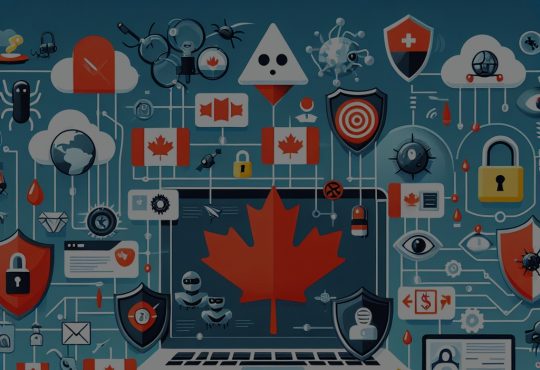
In today’s technology-driven world, children are exposed to the internet from a very young age. While the digital landscape offers numerous educational and social opportunities, it also poses significant risks. In Canada, where internet access is nearly ubiquitous, it’s essential for parents and guardians to understand how to protect their children from online dangers. This article aims to provide essential tips for safeguarding kids online in Canada, focusing on understanding the digital landscape, practical strategies for enhancing online safety, and available resources and tools for monitoring digital activities.
Understanding the Digital Landscape for Canadian Children
The digital landscape for children in Canada is continually evolving, fueled by advancements in technology and the increasing popularity of mobile devices. Statistics indicate that the majority of Canadian children have internet access, with many engaging in social media platforms and online gaming by the age of 10. These platforms are often designed to be engaging, creating an environment that can be both beneficial and detrimental to a child’s development.
Canadian children navigate a multitude of online environments, from educational websites to social media networks. Each of these platforms comes with its own set of risks, including exposure to inappropriate content, cyberbullying, and predatory behavior. As a result, it is crucial for parents to stay informed about the digital tools and platforms their children are using, along with the potential dangers associated with them.
Additionally, the Canadian government has launched several initiatives aimed at promoting digital literacy and online safety among children. Programs such as MediaSmarts provide resources for parents and educators to better understand the risks faced by children online. By familiarizing themselves with these resources, parents can equip their children with the knowledge and skills needed to navigate the internet safely.
Finally, it is essential to recognize that children often have a natural curiosity about the online world. This curiosity can lead to exploration that may expose them to risky situations. Therefore, understanding the digital landscape is the first step parents must take to safeguard their children, as it enables them to engage in informed conversations about online behavior.
Practical Strategies for Parents to Enhance Online Safety
One of the most effective strategies for parents looking to enhance online safety is establishing open communication with their children about internet use. Parents should regularly discuss the types of websites and apps their children are using, emphasizing the importance of sharing any uncomfortable experiences. By fostering an environment of trust, children are more likely to come forward with concerns and seek guidance when needed.
Setting boundaries is another critical strategy for safeguarding children online. Parents can establish rules regarding screen time, acceptable content, and the sharing of personal information. Implementing age-appropriate guidelines helps children understand the implications of their online actions and the importance of protecting their privacy. It is essential for parents to revisit these guidelines periodically, as children’s needs and the digital landscape are dynamic and continually changing.
Parents can also make use of parental control tools that can effectively monitor and limit their children’s online activities. Many devices and operating systems come equipped with built-in parental controls that allow parents to filter content, set time limits, and track online behavior. Third-party applications also provide advanced monitoring features, enabling parents to keep an eye on their child’s internet use. However, it is important that parents discuss the use of these tools with their children, ensuring they understand the reasoning behind them.
Lastly, parents should educate their children about the importance of cyber hygiene, such as creating strong passwords, recognizing phishing attempts, and knowing how to report inappropriate content. Teaching children to be critical thinkers about the information they encounter online can help them navigate the digital world more safely. When children are informed and empowered, they are less susceptible to the various risks that come with online engagement.
Resources and Tools for Monitoring Kids’ Digital Activities
In Canada, several resources provide valuable information and tools for parents looking to monitor their children’s online activities. Websites like MediaSmarts offer a wealth of educational materials, including guides on digital citizenship, cyberbullying prevention, and strategies for safe online interactions. These resources are designed to empower parents with the knowledge and skills necessary to navigate the complexities of the digital world alongside their children.
Another valuable resource is the Canadian Centre for Child Protection, which provides tools and programs designed to help parents keep kids safe online. Their "NeedHelpNow" program is particularly noteworthy, as it assists youth in handling instances of online exploitation and provides resources for parents on how to respond effectively. This comprehensive approach to online safety is vital in equipping families with the tools they need to address the potential risks of the internet.
In addition to educational resources, various software applications can assist parents in monitoring their children’s online activities. Tools like Qustodio, Norton Family, and Bark offer robust monitoring capabilities, including activity tracking, blocking harmful content, and sending alerts about concerning behavior. These applications allow parents to maintain oversight of their children’s digital lives while encouraging open dialogue about online safety.
Finally, community organizations and local schools often host workshops and seminars on digital safety for parents and children alike. Engaging in these community resources helps families stay informed about current trends and threats in the digital landscape. By leveraging these resources, Canadian families can work together to create a safer online environment for children.
As the digital landscape continues to evolve, the responsibility of safeguarding children online becomes increasingly crucial. By understanding the risks present in the online world, implementing practical strategies, and utilizing available resources and tools, parents in Canada can protect their children while encouraging healthy and safe internet habits. A collaborative approach, involving open communication and education, will empower children to navigate the digital realm safely and responsibly, fostering a positive online experience that can lead to personal growth and development.






